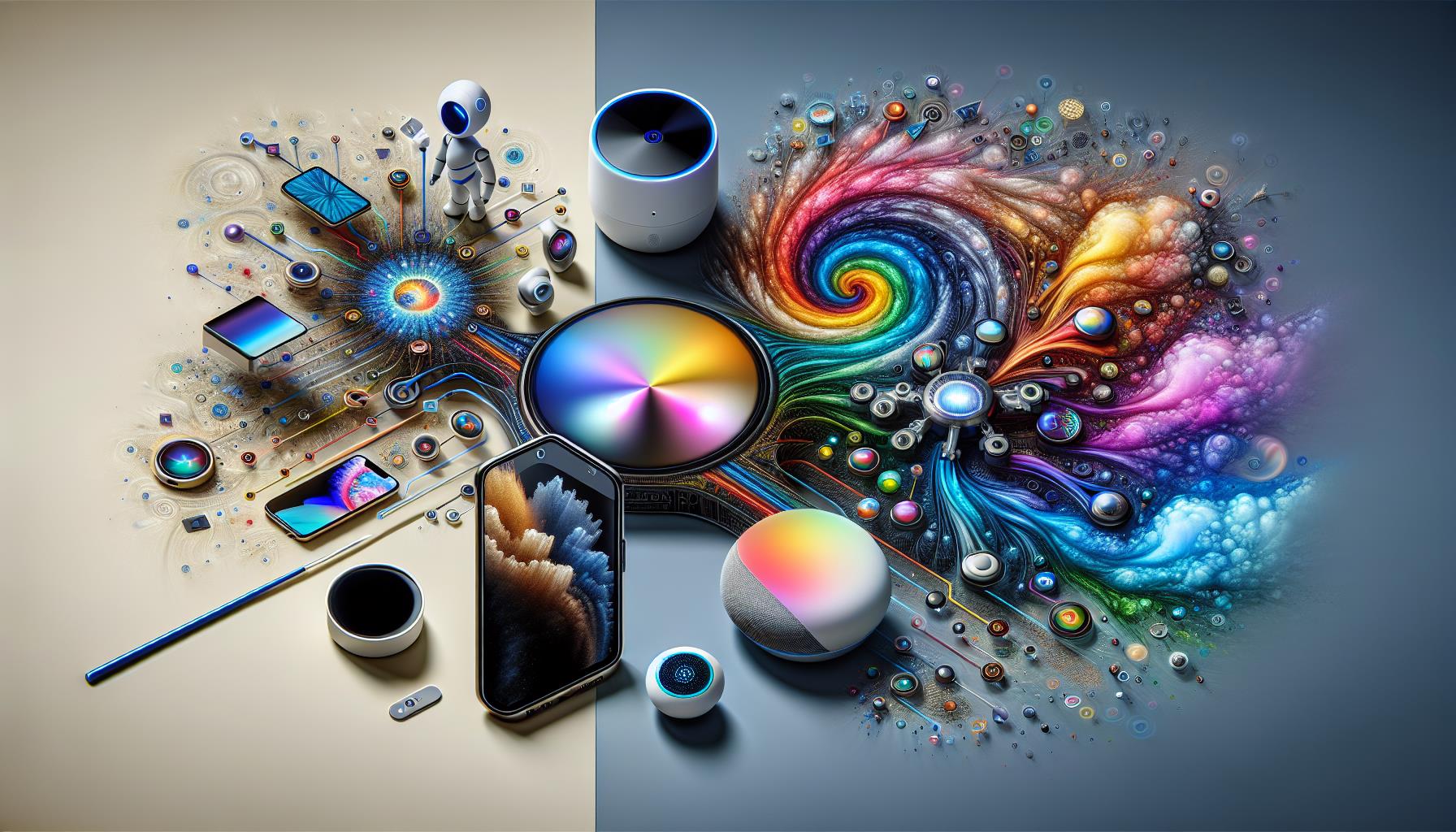Smart Home Devices
The consumer electronics landscape is undergoing a significant transformation, thanks to the influence of artificial intelligence (AI). Smart home devices are at the forefront of this change, becoming increasingly intuitive and responsive. Through AI integration, these devices are capable of learning from user interactions, thereby providing a seamless and personalized experience that was once the stuff of science fiction.
From smart thermostats that adjust the temperature based on your daily routines to lighting systems that create ambiance based on the time of day or mood, AI is making homes smarter and more efficient. This not only enhances comfort but also helps in conserving energy and reducing bills, making it a win-win for consumers and the environment alike.
Smarter Voice Assistants and Security Systems
Innovations in AI have revolutionized voice assistants, making them more intelligent than ever. Gone are the days of misinterpreted commands and limited functionality; today’s voice assistants can handle complex tasks and understand context to provide appropriate responses. Similarly, home security systems have become more sophisticated, using AI to differentiate between routine movements and potential threats, ensuring peace of mind for homeowners.
These systems can now send real-time alerts and updates to users’ smartphones, allowing for immediate action regardless of the user’s location. With continuous improvements, the future of voice assistants and security systems looks to provide even greater personalization and intuitive interaction.
Revolutionizing Kitchen Appliances
AI is making its way into the kitchen, transforming everyday appliances into smart gadgets that learn and adapt. Refrigerators can keep track of groceries and suggest recipes based on available ingredients, while ovens can automatically adjust cooking times and temperatures for perfect results. These intelligent appliances are designed to make cooking more enjoyable and less time-consuming.
Moreover, the integration of AI in kitchen devices extends to health-oriented features, like tracking nutritional intake and suggesting healthier alternatives. The convenience of these smart appliances is reshaping consumer behavior, with a growing preference for AI-enabled kitchens.
The Popularity of AI-Powered Wearables
Wearables have quickly evolved from simple fitness trackers to sophisticated health monitors, thanks to AI. These devices offer real-time health metrics, from heart rate and oxygen levels to stress and sleep quality, providing users with insights into their well-being. Moreover, AI algorithms can analyze this data to offer personalized recommendations for exercise, diet, and lifestyle adjustments, fostering a proactive approach to health management.
As the technology progresses, we can anticipate even more advanced features, like early detection of potential health issues, making AI-powered wearables an essential tool for health-conscious consumers.
Impact on Consumer Behavior
The influence of AI on consumer behavior cannot be overstated. With devices that adapt to individual preferences and needs, consumers are becoming accustomed to a high level of personalization and convenience. This shift is leading to higher expectations from all consumer electronics, compelling manufacturers to continually innovate to meet these demands.
Moreover, the data collected through AI-driven devices is providing valuable insights into consumer habits and preferences, enabling companies to tailor their offerings more effectively. This symbiotic relationship between AI and consumer behavior is driving the consumer electronics industry toward a more user-centric future.
References
- “AI’s Impact On The Future Of Consumer Behavior And Expectations.” Forbes. Access here.
- “What’s next for AI in 2024.” MIT Technology Review. Access here.
- “How AI is revolutionizing the customer journey in 2024.” CMSWire. Access here.
- “Artificial intelligence consumer behavior: A hybrid review and research agenda.” ResearchGate. Access here.
- “The future of AI’s impact on society.” MIT Technology Review. Access here.
